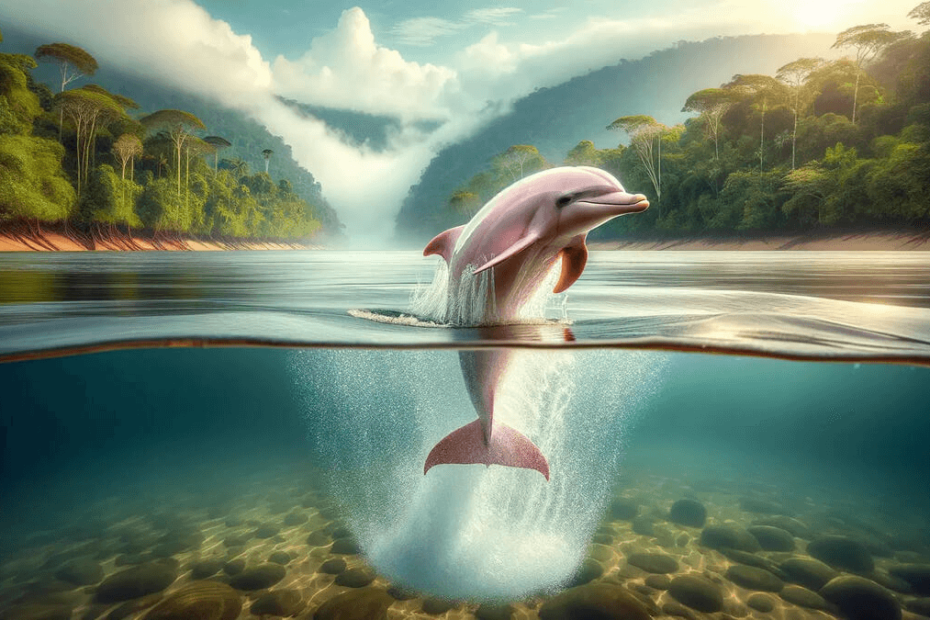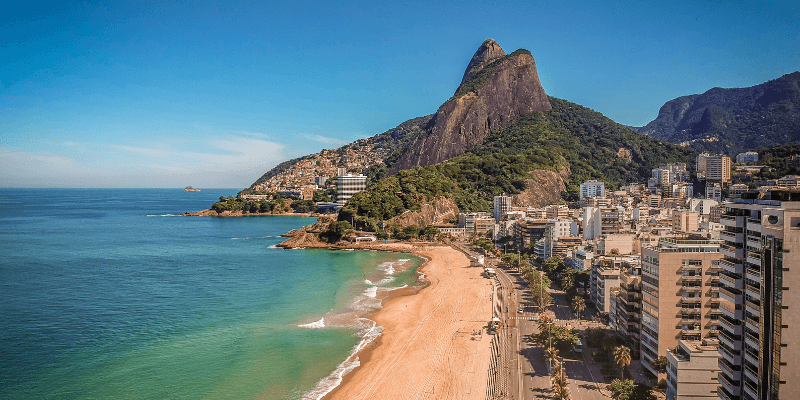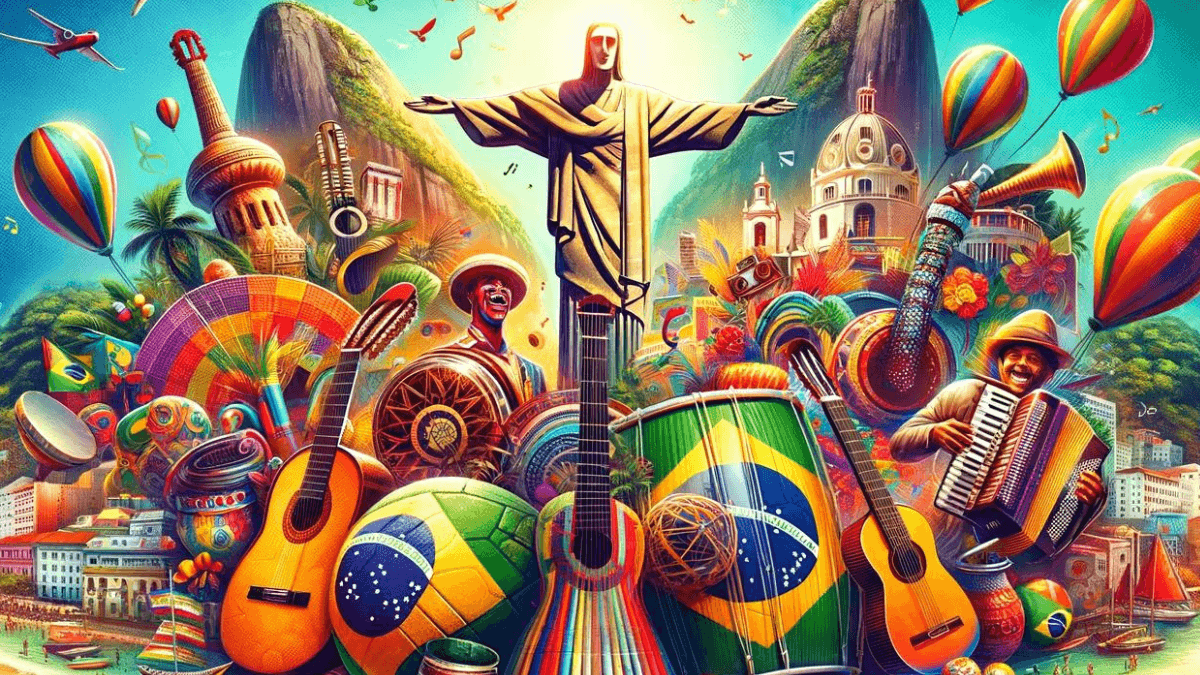- Discover the captivating world of Animals From Brazil Amazon Rainforest.
- Explore the rich biodiversity and conservation efforts of this unique ecosystem.
- Learn how you can contribute to preserving the Amazon’s natural treasures.
Welcome to a journey through the heart of the Amazon Rainforest, where diverse and magnificent creatures thrive in a mesmerizing symphony of life.
Welcome, fellow explorers, to the heart of Brazil, where the Earth breathes with life—The Amazon Rainforest. This vast expanse, a green sea of biodiversity, stretches across the northern part of Brazil, a treasure chest of nature’s finest jewels.
Imagine stepping into a world where every corner whispers the ancient tales of the land, home to the most diverse collection of living plants and animals on our planet.
The Amazon isn’t just a forest; it’s the very lifeblood of our planet, regulating the global climate and housing an incomparable variety of life.
From the tiniest insects that dance in the sunlight to the majestic jaguars that roam its shadowy depths, every creature adds a verse to the Amazon’s eternal song.
This rainforest is a canvas painted with the broadest palette of greens, where the air is filled with the music of nature, a symphony of birdsong, monkey calls, and the rustle of leaves.
But the Amazon’s significance stretches beyond its ecological wonders. It’s a vital source of oxygen, a natural reservoir capturing carbon dioxide, making it a critical player in our fight against climate change.
Its rivers and streams are the veins through which the heart of the Earth pumps, nurturing life in forms so varied, some are yet to be discovered.
As a Brazilian eager to share the marvels of my country, I invite you to join me on a journey through this emerald paradise.
Let’s explore the magic, the mystery, and the sheer splendor of the Amazon Rainforest together, discovering the animals that call this wonderland home.
Through our exploration, we not only learn about the incredible biodiversity but also understand the importance of preserving this unique environment for future generations.
So, grab your explorer’s hat, and let’s dive into the lush, vibrant world of the Brazilian Amazon Rainforest!
Animals from Brazil Amazon Rainforest: The Magnificent Mammals
Diving into the Amazon Rainforest in Brazil, we’re greeted by an extraordinary cast of mammalian characters, each playing a crucial role in the ecological theater.
As seed dispersers, predators, and prey, they weave a complex web of life that sustains the forest’s health and diversity.
Let’s journey into their world and uncover the roles they play in the vibrant tapestry of the Amazon.
Jaguars: Kings of the Amazon
Know as “Onça-pintada” in Brazil and In the lush expanse of the Amazon, the jaguar reigns supreme, a symbol of strength and majesty.
This elusive big cat, with its striking coat and powerful build, embodies the wild heart of the Amazon.
As apex predators, jaguars play a critical role in maintaining the balance of the rainforest ecosystem, regulating other species’ populations and ensuring a healthy diversity.
Also See | Amazon Rainforest Tribes: Discover the 5 largest and other information about all the peoples who live in the forest
Their presence signifies the forest’s overall health and vitality, making them not just kings of the Amazon, but guardians of its intricate web of life.
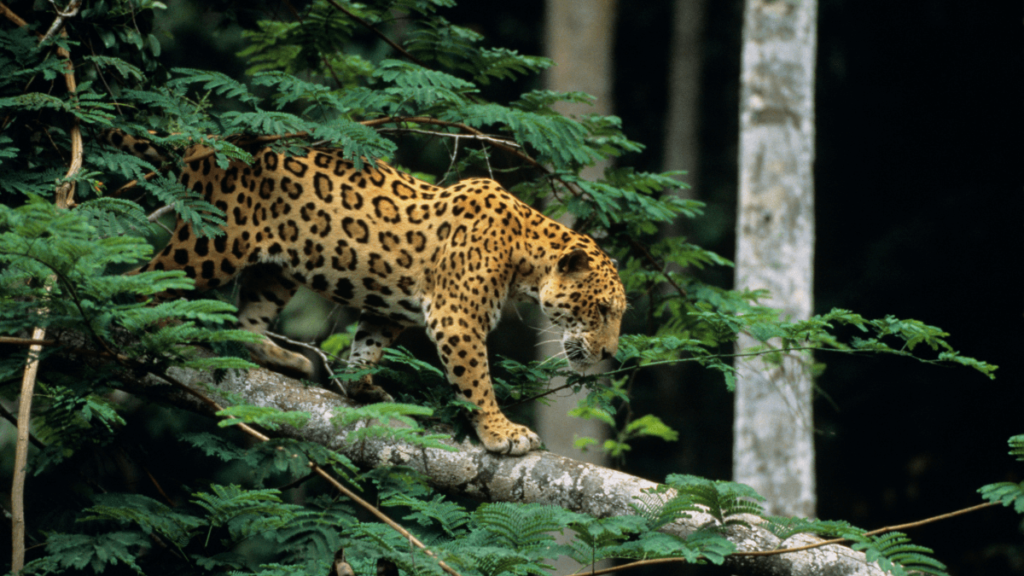
Monkeys in the Canopy: Diversity in the Treetops
The Amazon’s treetops are alive with the chatter of monkeys, showcasing an incredible diversity of species.
From the tiny, agile pygmy marmoset to the sociable capuchins, these primates are the vibrant essence of the Amazon’s biodiversity.
Each species plays a pivotal role in the ecosystem, whether as seed dispersers or as part of the complex food web, ensuring the rainforest’s health and survival.
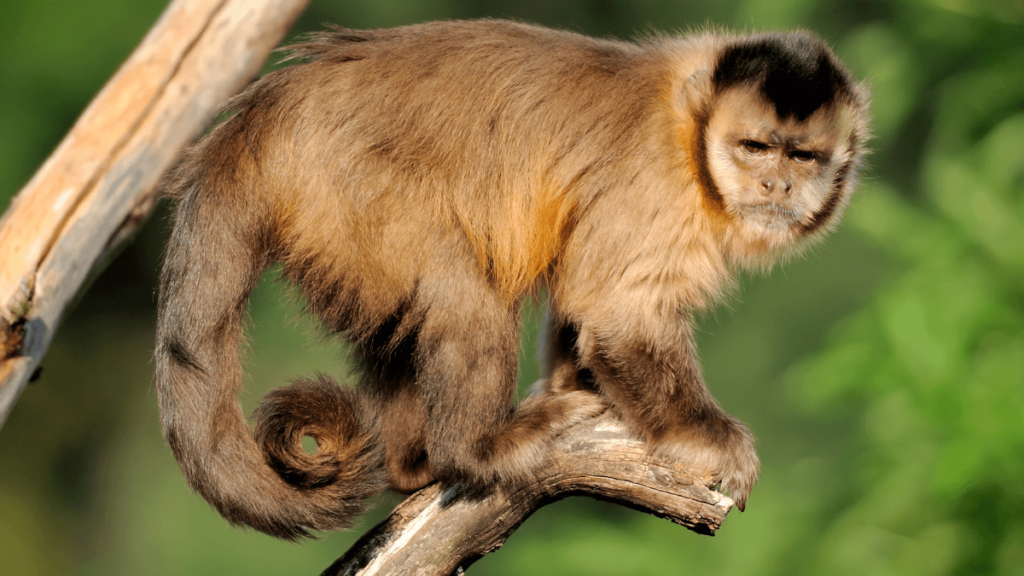
Plan your trip to Brazil
-
Find the cheapest flights -
Discover the best accommodation -
Explore this incredible country with the best experiences -
Stay connected at all times with an eSIM
River Giants: Otters and Dolphins
The waterways of the Amazon are home to remarkable river giants like the giant otter and the pink river dolphin.
These creatures are not just wonders to behold but are vital to the aquatic ecosystem, maintaining the balance of riverine environments.
The giant otter, with its impressive teamwork, and the intelligent pink dolphin, with its echolocation abilities, navigate the rivers, showcasing the unique adaptations of Amazonian wildlife.
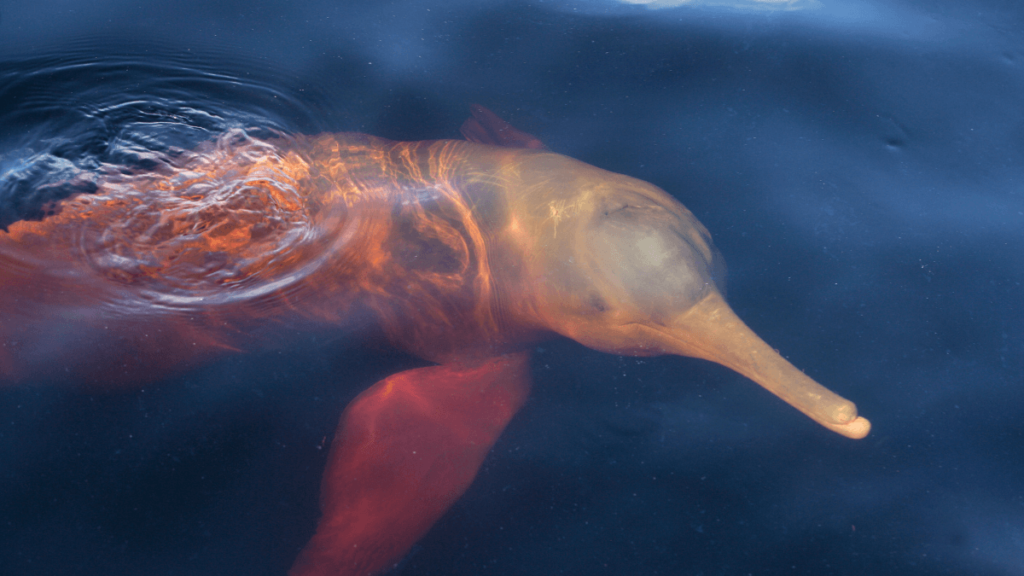
Nighttime Wanderers: Bats and Ocelots
As dusk falls over the Amazon, nocturnal adventurers emerge.
Bats, with their silent wings, navigate the night sky, crucial for pollination and insect control, while the stealthy ocelots, with their keen eyes, prowl the underbrush.
These nighttime wanderers showcase the Amazon’s unseen diversity, playing vital roles in ecological balance and pest management, making every night in the rainforest a bustling hub of activity unseen by the daytime observer.
Birds of the Amazon: Color and Song
The Amazon Rainforest is a symphony of colors and songs, thanks to its vibrant avian life.
This natural aviary is home to an astonishing array of birds, from the majestic macaws painting the sky with their brilliant hues to the melodious songbirds filling the air with their tunes.
Each bird species contributes to the rainforest’s dynamic ecosystem, playing roles as pollinators, seed dispersers, and pest controllers.
The feathered inhabitants of the Amazon not only add to its beauty and diversity but are essential to the ecological harmony of this lush paradise.
Macaws: The Colorful Icons
Macaws are the quintessential symbols of the Amazon, renowned for their vivid plumage and intelligence.
These large parrots, with their raucous calls and striking colors, play a vital role in the ecosystem, acting as seed dispersers for various trees and plants, ensuring the rainforest’s regeneration and health.
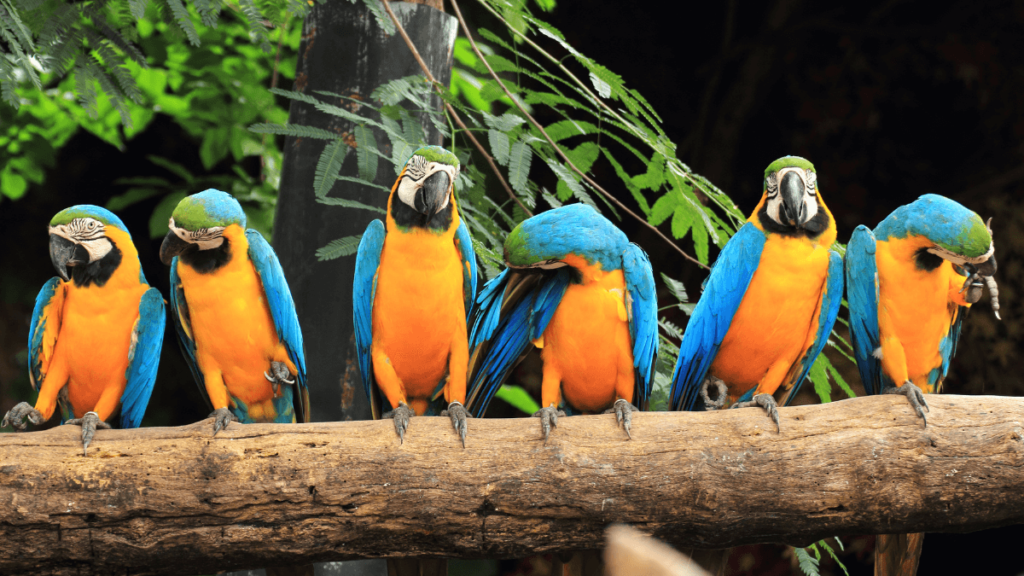
Eagles and Hawks: Masters of the Sky
Eagles and hawks, the formidable predators of the Amazon skies, command the air with their keen sight and powerful flight.
They maintain ecological balance by controlling populations of smaller animals, embodying the intricate connections within the rainforest’s food web.
Unique Birds: Hoatzins and Toucans
Hoatzins and toucans, with their distinctive appearances and behaviors, add to the Amazon’s uniqueness.
Hoatzins, with their prehistoric looks and vegetarian diet, and toucans, known for their large, colorful bills and fruit-eating habits, highlight the diverse avian life that thrives in the dense foliage and vibrant landscapes of the Amazon.
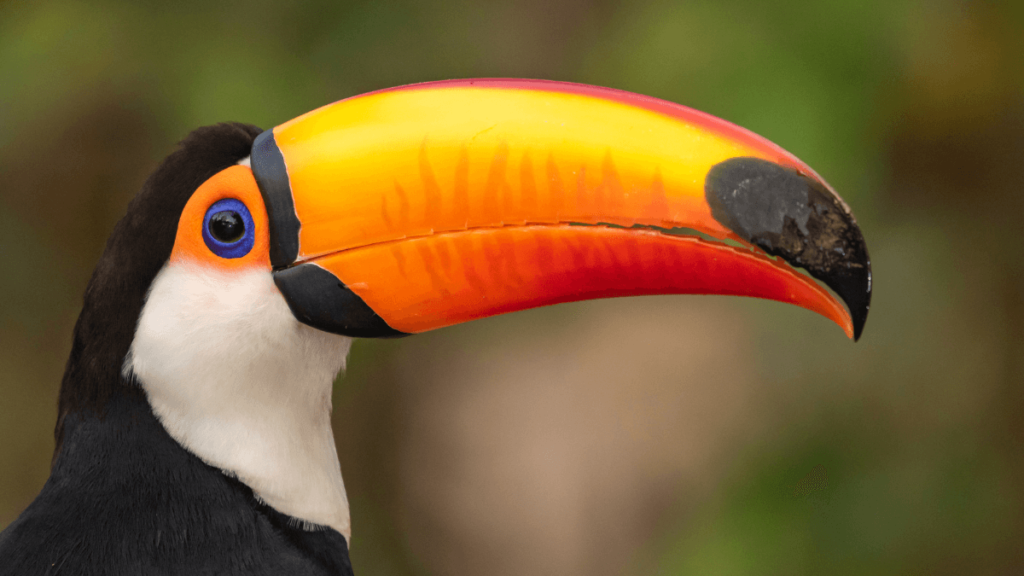
Conservation Status: Threats to Avian Diversity
The avian diversity of the Amazon faces several threats, including habitat destruction due to deforestation, climate change, and illegal trafficking, like is show on the Rio movie.
These challenges lead to a decline in bird populations and a loss of species variety, disrupting the ecological balance. Conservation efforts are vital to protect these birds and their habitats, ensuring the Amazon continues to resonate with the songs and colors of its unique avian inhabitants.
Reptiles and Amphibians: A World of Camouflage
Slipping into the Amazon’s hidden world reveals a rich tapestry of reptiles and amphibians, masters of disguise and adaptation.
This realm is a showcase of evolution in action, where vibrant frogs blend seamlessly with the forest floor and sleek snakes glide silently through the water.
These creatures, often overlooked, play pivotal roles in their ecosystems, from controlling insect populations to serving as indicators of environmental health. Exploring this diverse group offers insights into the complexity and resilience of life in the Amazon Rainforest.
Anacondas and Caimans: Predators of the Waterways
Anacondas and caimans are formidable predators in the Amazon, embodying the raw power of its waterways.
Anacondas, with their incredible size and strength, reign underwater, while caimans patrol the rivers, showcasing the diversity and adaptability of life in the Amazon’s aquatic environments.
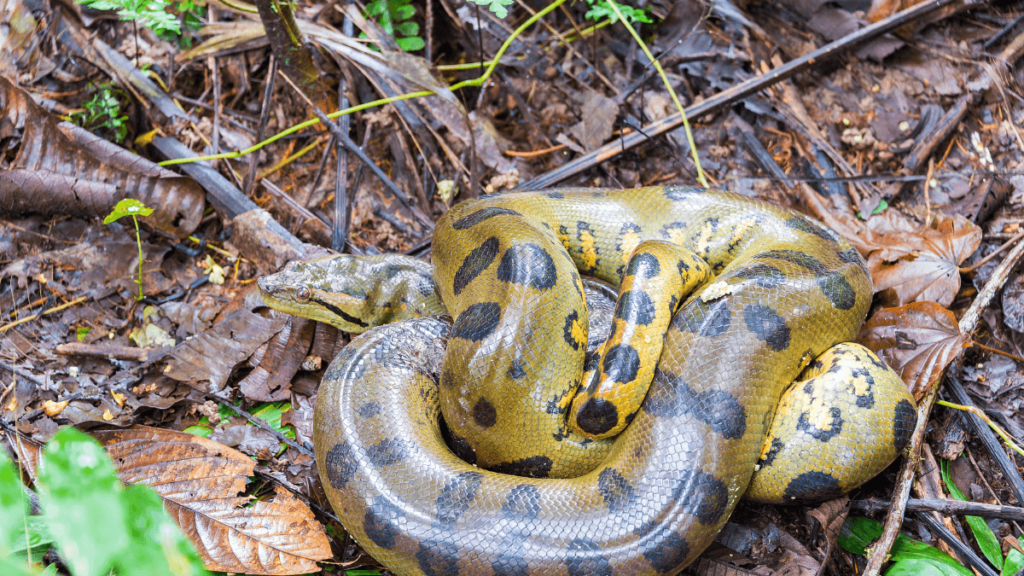
Frogs and Toads: A Kaleidoscope of Danger
The Amazon’s frogs and toads are a vibrant display of colors and patterns, each species boasting unique toxins for defense.
These amphibians are crucial for controlling insect populations, illustrating the delicate balance within the rainforest ecosystem.
Turtles and Tortoises: Ancient Navigators
Turtles and tortoises, the ancient navigators of the Amazon, are key to understanding the ecosystem’s history and health.
Their varied diets and migratory patterns help maintain the biological diversity and integrity of the rainforest’s waterways and lands.
Insects and Arachnids: The Unseen Majority
Beneath the lush canopy of the Amazon, a less noticed but equally fascinating world thrives—the realm of insects and arachnids.
These small creatures form the unseen majority, playing indispensable roles in the ecosystem.
From pollination to decomposition, they are at the heart of many critical processes that sustain the forest. Their presence signals a healthy environment, making them key indicators for scientists studying biodiversity and ecological balance. This microcosm of life, though often overlooked, is essential for the Amazon’s richness and vitality.
Butterflies and Moths: The Lepidoptera Effect
Butterflies and moths, with their dazzling colors and patterns, play a crucial role in the Amazon’s ecological web.
Their life cycles, from caterpillar to winged adult, contribute significantly to plant pollination and the health of their habitats.
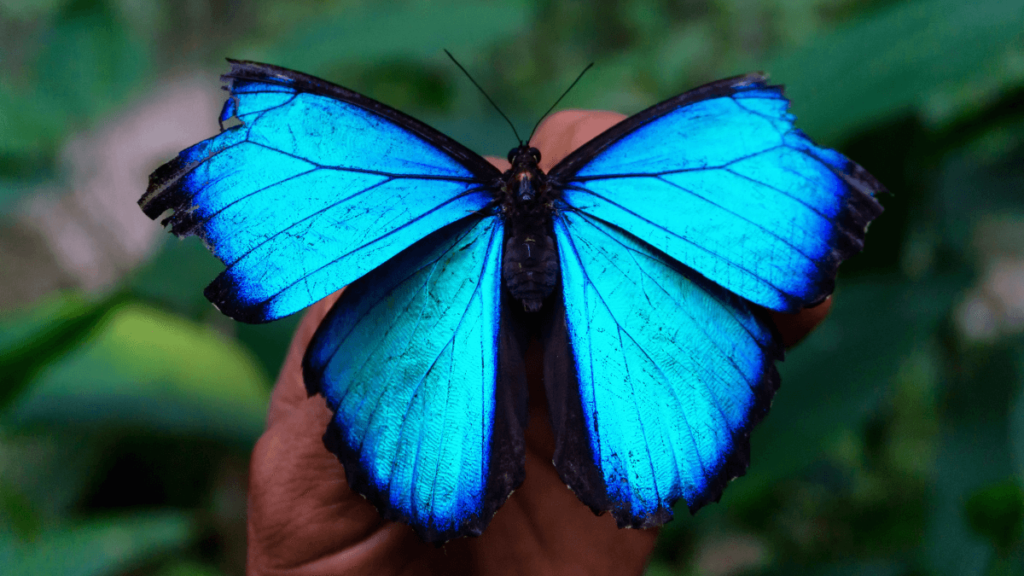
Ants and Beetles: The Cleanup Crew
Ants and beetles are the Amazon’s efficient cleanup crew, breaking down dead matter and recycling nutrients back into the ecosystem.
Their tireless work ensures the forest floor is not overrun with debris, promoting a healthy environment for plant growth.
Spiders and Scorpions: Masters of Predation
Spiders and scorpions, the skilled predators of the insect world, maintain the delicate balance of the Amazon’s ecosystem.
Their roles as hunters help control the populations of other insects, contributing to the overall health and diversity of the rainforest.
Conservation Efforts and Challenges
The Amazon’s vast expanse is a crucial cradle of biodiversity, underpinning the health of our planet. Yet, this irreplaceable ecosystem faces unprecedented threats from deforestation, climate change, and illegal activities, making conservation efforts more critical than ever.
The survival of countless species and the balance of global climate systems hinge on protecting this natural treasure.
Highlighting the urgent need for action, conservation initiatives aim to safeguard the Amazon, ensuring its resilience and the continuation of its vital ecological functions for future generations.
Deforestation: The Primary Threat
Deforestation stands as the principal menace to the Amazon, stripping away its vital forests for agriculture, logging, and urban expansion, directly impacting its biodiversity and contributing to global climate change.
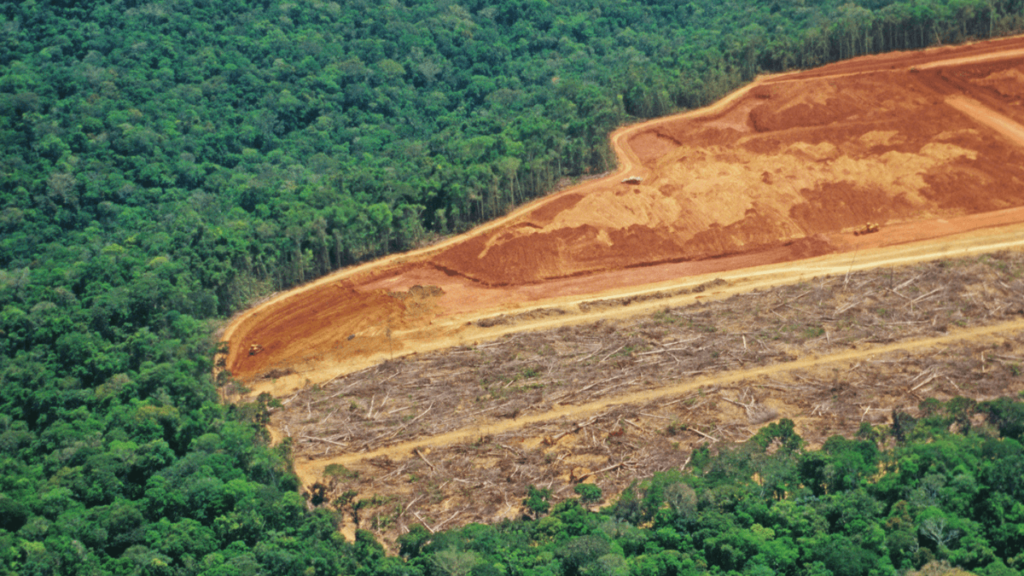
Climate Change Effects
Climate change exacerbates threats to the Amazon, altering rainfall patterns, increasing fire risks, and stressing wildlife, potentially transforming lush habitats into savannah-like environments, diminishing biodiversity.
Conservation Strategies and Success Stories
Conservation efforts, including protected areas, sustainable practices, and international cooperation, have shown success, preserving habitats, restoring ecosystems, and raising awareness, offering hope for the Amazon’s future.
How to Help: Global and Local Initiatives
In the face of the Amazon’s environmental challenges, every individual and community holds the power to make a difference.
From reducing carbon footprints to supporting sustainable products and advocating for conservation policies, there are numerous ways to contribute to the preservation of this vital ecosystem.
Engaging with and supporting local and global initiatives focused on conservation can amplify efforts to protect the Amazon, ensuring its survival and the continuation of its critical role in our planet’s ecological and climatic balance.
Supporting Sustainable Practices
Embracing sustainable practices is key to conserving the Amazon. This includes choosing products that are responsibly sourced from the rainforest, supporting eco-friendly companies, and reducing waste.
By making informed choices, individuals can contribute to reducing the demand that drives deforestation and pollution, aiding in the preservation of this vital ecosystem.
Participating in Awareness and Education Programs
Awareness and education are powerful tools in the conservation effort. Participating in programs that promote understanding of the Amazon’s importance and the threats it faces can empower communities globally.
Sharing knowledge and advocating for the rainforest can inspire collective action towards its preservation.
FAQ
9 Frequent Answer Questions about Animals From Brazil Amazon Rainforest
What types of animals can I find in the Brazil Amazon Rainforest?
In the Brazil Amazon Rainforest, you’ll find a spectacular array of animals, making it a hotspot for biodiversity.
This includes large predators like jaguars, numerous monkey species such as the capuchin and howler monkeys, and unique aquatic creatures like the pink river dolphin.
The forest is also home to an incredible variety of birds, including vibrant macaws and the elusive harpy eagle. Reptiles like the green anaconda and the black caiman thrive here, along with a multitude of insects and amphibians, including brightly colored poison dart frogs.
Each species plays a vital role in the rainforest’s complex ecosystem, contributing to the rich tapestry of life that makes the Amazon so crucial for global biodiversity.
How important is the Amazon Rainforest for global biodiversity?
The Amazon Rainforest is a cornerstone of global biodiversity, often referred to as the “lungs of the Earth.” It is home to about 10% of all species known to science, making it the most species-rich biome in the world.
This incredible diversity includes not only animals but also plants, insects, and microorganisms, many of which are found nowhere else on the planet.
The Amazon plays a critical role in regulating the global climate by absorbing vast amounts of carbon dioxide, producing oxygen, and influencing weather patterns across the globe. Preserving its biodiversity is vital for maintaining ecological balance, supporting indigenous communities, and for the overall health of our planet.
Are there any threats to the Amazon Rainforest?
Yes, the Amazon Rainforest faces several significant threats that impact its biodiversity and ecological balance. Deforestation, primarily for agriculture, cattle ranching, and logging, is a leading cause of habitat loss.
Illegal wildlife trade and mining activities also pose serious risks, disrupting habitats and endangering species. Additionally, climate change contributes to altering rainfall patterns and increasing the frequency and intensity of forest fires.
These threats not only affect the local ecosystem but also have global implications, emphasizing the urgent need for comprehensive conservation efforts to protect this vital natural resource.
How can I help in conserving the Amazon Rainforest?
To help conserve the Amazon Rainforest, individuals can take several impactful actions. Supporting sustainable products and companies that prioritize eco-friendly practices helps reduce demand for resources that lead to deforestation.
Donating to reputable conservation organizations working on the ground can provide crucial financial support for their efforts.
Advocating for policies that protect the environment and raising awareness about the importance of the Amazon can also make a significant difference.
Additionally, reducing one’s carbon footprint and promoting reforestation initiatives contribute to the broader fight against climate change and its effects on the Amazon.
Can tourists visit the Amazon Rainforest to see its wildlife?
Yes, tourists can visit the Amazon Rainforest to experience its unique wildlife and landscapes.
Eco-tourism initiatives are designed to allow for sustainable travel experiences that minimize environmental impact and benefit local communities.
These tours offer opportunities to see a wide range of animals in their natural habitats, from river dolphins and colorful birds to monkeys and even jaguars, under the guidance of knowledgeable local guides.
It’s essential to choose responsible tour operators committed to conservation and respecting indigenous lands to ensure that tourism supports the preservation of this vital ecosystem.
What are some unique animals found only in the Amazon?
The Amazon hosts unique animals like the Amazon pink river dolphin, known for its intelligence and distinctive color; the poison dart frog, famous for its vivid hues and potent toxins; and the jaguar, the largest predator in the Americas.
Other exclusives include the capybara, the world’s largest rodent, and the unique insect-eating hoatzin bird.
These species, among others, underscore the Amazon’s unparalleled biodiversity, making it a critical area for conservation efforts to preserve its unique ecological niche.
What conservation efforts are in place for the Amazon?
Conservation efforts for the Amazon include the establishment of protected areas and national parks, international agreements for rainforest conservation, sustainable development programs, and reforestation projects.
Organizations worldwide collaborate with local communities and governments to combat deforestation, promote biodiversity, and support sustainable livelihoods.
Research and monitoring are crucial for understanding ecological changes and threats, guiding effective conservation strategies.
These collective efforts aim to preserve the Amazon’s invaluable ecosystems for future generations, highlighting the global importance of this natural heritage.
How does climate change affect the Amazon Rainforest?
Climate change affects the Amazon Rainforest by altering rainfall patterns, increasing the likelihood of droughts, and exacerbating the severity and frequency of fires.
These changes threaten the delicate balance of this ecosystem, impacting both the flora and fauna that depend on it.
The shift in climate conditions can also lead to a decrease in biodiversity and affect the rainforest’s ability to function as a vital carbon sink, undermining its role in global climate regulation.
How bigger is Brazilian part of Amazon?
The Brazilian part of the Amazon Rainforest, often referred to as the Amazon Basin, covers approximately 60% of the entire Amazon rainforest’s area.
This vast region spans several Brazilian states and is the largest tract of tropical rainforest in the world, playing a crucial role in global climate regulation, biodiversity, and carbon storage.
The Future of the Amazon Rainforest
The Amazon Rainforest, a cornerstone of global biodiversity, urgently needs preservation for the well-being of future generations.
Its protection hinges on international cooperation and the integration of scientific research and community engagement to address and mitigate environmental impacts.
The collective efforts in research, monitoring, and implementing sustainable practices underscore the global commitment to safeguarding this invaluable ecosystem.
The future of the Amazon, and inherently our planet’s health, relies on our collective action today, showcasing the vital importance of unity and responsibility towards environmental conservation.
Did you like our content, do you want to get to know our country?! Discover the best experiences to live in Brazil!
